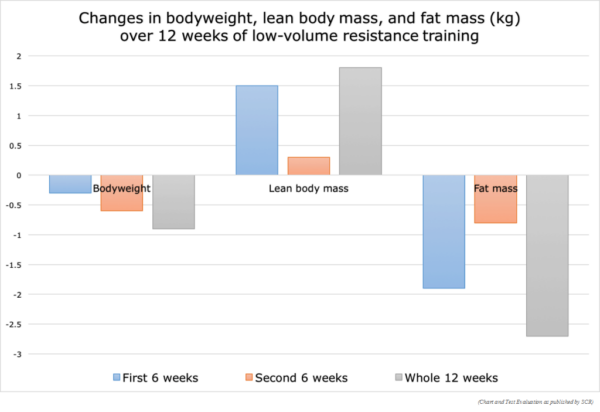We all start cycling for different reasons, but once we catch the bug, there’s only one question on our minds. How can I get faster?
For most, the major barrier is excess fat. As we begin to edge into and beyond middle age (by far the largest demographic in cycling and triathlon) a lot of that fat begins to congregate around our mid section, and remains stubbornly difficult to shift. We ride mile after mile, expending huge calories in the process, yet it seems to have little to no effect.
Our guest blogger this week is Katrin Schlee, personal trainer and group fitness instructor at a leading UK boarding school and conditioning coach for Oxted cycling club. In an extract from a longer piece on body conditioning, she talks about the limited usefulness of long distance aerobic exercise on weight loss.
Have we been going down the wrong path all this time? Is cycling itself keeping us fat?
Many athletes over do the carb-loading before an average ride and then refuel with plenty more carbs afterwards, maybe even the wrong kind of carbs. Unless you are creating a significant caloric deficit through cardio, without compensating for the energy expenditure by consuming more food, you simply cannot ‘out-ride’ a bad diet.
I often write about what cyclists ought to do to improve their performance or become better athletes. The theme is common shedding body fat increase performance.
You may know that men in particular are more prone to developing a pot belly, particularly when their diet is in need of an overhaul. Advancing age and decreasing testosterone levels compound the problem and so it is not uncommon for a middle-aged male cyclist to have a proverbial football tucked away under his Lycra.
Not a great look, but more importantly, an expanding waistline is associated with a number of serious health issues.
Unless you are creating a significant deficit of calories by performing a high volume of cardio, the weight loss that can be expected as a result of steady-state cardio is relatively insignificant.
The truth is you simply cannot ‘out-ride’ a bad diet.
If you are aiming to reduce fat it may be a good idea to forego the carb-loading pre-ride ritual that is commonly prescribed in order to fuel a long ride. Try riding in a fasted state once in a while in order to teach your body to make use of other sources of energy.
Exercise with Scientific Backbone
Even though on-line reviews are conflicting in terms of the type of exercise that gets the best results for body fat reduction around the belly, what has been shown in research is that the most effective strategy for fat loss is a reduced-calorie diet in conjunction with resistance training.
Typical aerobic exercise makes only a relatively minor contribution to weight loss beyond dieting, whereas resistance training builds or at the very least maintains lean muscle mass thereby increasing energy expenditure at rest.
The following study is interesting because diet did not play a role. Researches wanted to see whether resistance training alone (without diet) could reduce abdominal fat in already lean individuals. The study aimed to show how a 12-week period of low-volume resistance training would affect body composition, especially abdominal fat, in recreationally-trained (but still fairly novice) bodybuilders.–
What was the study?
Martins AP, Ceschini FL, Battazza R, Rodriguez D, João GA, Bocalini DS, Charro MA, Figueira Junior A.
A Low-Volume Weight Training Protocol Reduces Abdominal Fat and Increases Muscle Strength in 12 Weeks
What did the researchers do?
Changes in body composition were the focus of the study. Measurements from the following areas were obtained:
- Skinfolds (triceps, chest, and sub-scapular for males; and triceps, abdominal, and suprailiac for females)
- Circumferences (abdomen, waist, hip, arm, and thigh)
- Lower-body strength (1RM 45-degree leg press)
- Upper-body strength (1RM bench press)
What did the researchers find?
Of all the circumference measurements a significant change was seen only in the waist measurement:
- by9cm or 2.4%, from 77.6 ± 9.3 to 75.7 ± 4.2cm.
Of all the skinfold measurements a significant change was seen only in the abdominal skinfold:
- by3mm or 10.3%, from 22.3 ± 4.6 to 20.0 ± 9.7mm.
These measurements taken in conjunction are a direct indicator that there was a substantial reduction in abdominal adiposity over the 12-week training period.

What did the researchers conclude?
The researchers concluded that a 12-week, low-volume resistance training program had the following effects on body composition
- 4% decrease in waist circumference
- 3% reduction in abdominal skinfold
- 8kg increase in lean body mass
- 7kg (4%) reduction in body fat
The reduction in actual body weight was small due to the fact that lean muscle mass increased whilst body fat decreased: a desirable situation for anybody looking to slim down.
These conclusions are exciting because the study has shown that abdominal fat reductions occur in line with overall reductions in body fat percentage, increases in lean body mass, and gains in strength.
Even more reason to begin a structured strength training programme that will end up delivering a double whammy: increased leanness and also increased strength and power on the bike.
Who said you couldn’t have your cake and eat it, too?